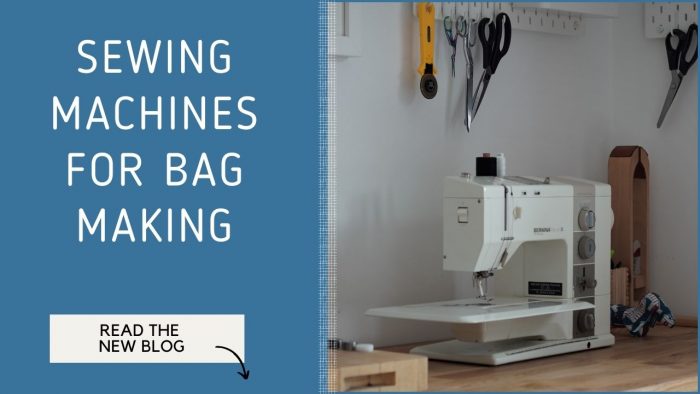
If you prefer video, watch here.
Which sewing machine is best for bag making? My beloved Bernina 930 recently suffered an electronic fault so it was finally time for me to buy a new machine. We put this question to our mailing list and received a tonne of valuable feedback. I’ve compiled it all into one post that I hope will provide lots of information if you’re looking for a new bag making machine. This post covers:
- Four types of sewing machine and their pros and cons
- Six questions you need to ask before choosing a new machine
- Which machines were recommended by our mailing list
- The machine I settled on
- A great discount for you if you decide to purchase the same machine as me.
Types of sewing machines and their pros/cons
Domestic Sewing Machines
This is a difficult bracket to cover as it includes a vast expanse of machines. You can buy a domestic machine for £100 or you can buy a “domestic” machine for £9,000. There’s a huge variety in what they can do too. Some are great for embroidery, quilting, a variety of stitches, etc. Most domestic sewing machines include a variety of stitch types, including ones for stretch stitches and so on. If you’re only using your machine for bag making, is it worth paying for a good domestic machine that has lots of extra stitches and features you’ll never use?

Vintage Sewing Machines
Generally vintage sewing machines are more affordable. For example, a Singer 201 can be found for as little as £20 and they’re usually easy to find on Ebay or Facebook Marketplace. Only the good ones survive for decades so if the sewing machine is still around now, it’s a good indication that it’s a great machine and a real workhorse. Most vintage machines have no computer so there’s less to go wrong and many of them are straight stitch only. Because most vintage machines are made of metal, they’re generally heavier which is good for bag making because it helps the machine stay in place and not wobble around while you’re sewing tough projects. These machines are a great place to start if you’re new to bag making and don’t want to invest too much at the outset. However, they do lack the little modern extras such as a needle threader or bright LED lights.
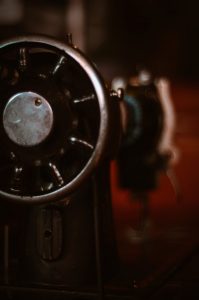
Straight stitch (aka semi-industrial/professional)
They only do one thing. They sew straight. You don’t have any other stitches so there’s less to go wrong. They generally don’t have computers, or at least they have less electronics than a standard domestic machine. The one thing they do, they do very well. A lot of people comment that their bobbin stitching is just as neat as the topstitching. If you’re only sewing straight lines, these machines are brilliant. We’ll discuss them in greater detail later.
Industrial
Fantastic for bag making. Industrial machines can sew through almost anything. However, they don’t just sit on your worktop. They come built into their own table, so if you’re limited on space, this may not be the option for you. These machines are fantastic for heavy materials but if you like to chop and change between thick and thin materials, you’ll need to get good at changing the tensions. This is generally more in depth than changing the tension on a domestic machine.
For example, when Adam sews leather on his Sailrite Fabricator and I then want to sew cotton, I have to change the two top tension knobs and also change the tension on the bobbin casing. I also need to change the needle and thread. I rarely get it right first time so each time I do this I need to spend some time testing the tension before actually sewing my project. Ideally, you’d have an industrial machine for sewing vinyl and leather and then a domestic machine for your cotton linings. That way everything is ready to go. But this would require more space and more investment so it’s definitely not a solution for everyone. You can of course get other types of industrial machine such as column stitchers, but the ones we’re referring to are straight stitch machines such as the Sailrite Fabricator. With these machines, you usually have to assemble and service them yourself. Industrial machines usually feature a compound walking foot which works differently to a standard walking foot and is very effective at sewing thick and difficult materials. In my opinion, the compound walking foot is what really sets these machines apart from the straight stitch machines.
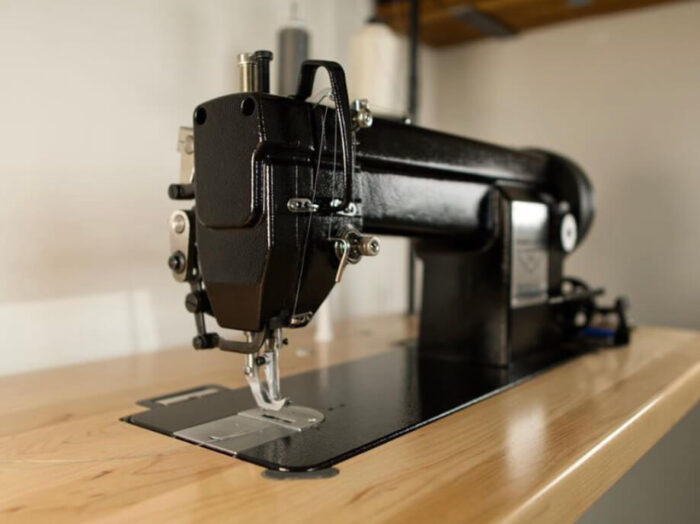
QUESTIONS YOU NEED TO ASK BEFORE BUYING A NEW MACHINE
1. What am I going to use this machine for?
Are you just making bags? Are you also sewing garments, doing embroidery, and other projects? If you’re just making bags, a straight stitch machine seems to be the most recommended by our mailing list. But this is not going to work if you want to do garment sewing and for example need to sew stretch fabrics.
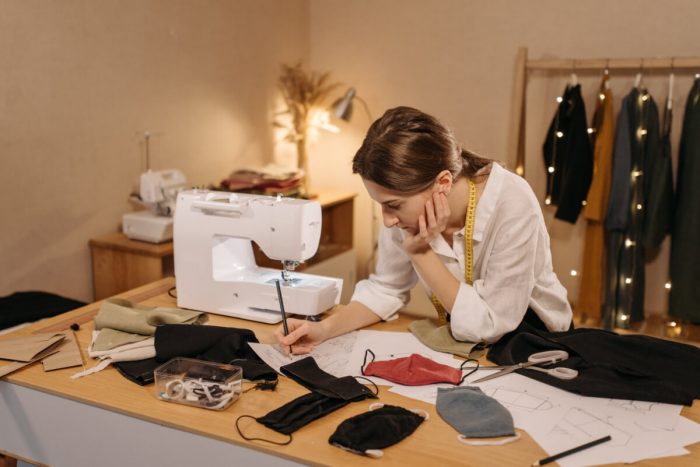
2. Am I able to have two machines?
If you already have a domestic machine that you use for your garment sewing and other projects, and all you want is a bag making sewing machine. Definitely consider getting a straight stitch or industrial sewing machine. These will take your bag making to the next level and make it easier and more enjoyable.
3. What materials/fabrics do you want to sew?
If you love using cotton, waxed canvas, cork for your bag making, a straight stitch machine will work great for you. But if you want to use lots of vinyl and leather, an industrial machine is probably more suited to your needs. Also bear in mind that straight stitch and industrial sewing machines are generally no more expensive than a good domestic machine.
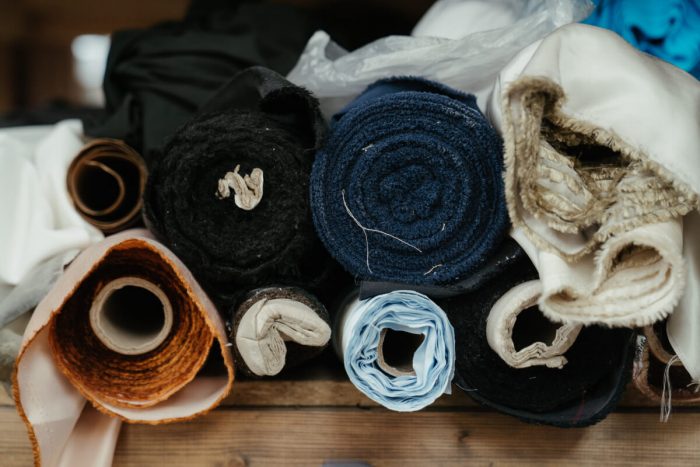
4. Do I have space?
Do you have space for an industrial machine? They don’t sit on a worktop, but instead come built into their own table so bear this in mind before committing to an industrial sewing machine.
5. What’s my budget?
Some domestic sewing machines are very expensive. If you want a domestic machine that’s brilliant at everything including bag making, you could be looking at spending a lot more than if you buy a straight stitch or industrial machine. Many of the domestic machines that were recommended to us for bag making cost £7,000-9,000. That’s about 7 or 9 times more than most industrial sewing machines. If you’re not using it for anything except bag making, it doesn’t make sense to spend the extra on a machine with all those features you don’t need.
6. What features do I need?
You can spend a lot of money on features that look and sound great, but are you going to use them? If not, you can end up investing a lot more money than necessary. Decide what features you can’t live without and go from there. Test out various machines before you buy one, and be sure to shop around for a good price, but also for fantastic customer service. Find out what happens if there’s a problem with your machine. Can you take it back to the local shop for repair or are you required to ship it to the manufacturer? How long do repairs take? The answers to these questions may well impact where you decide to buy your machine from.

Which machines did the mailing list recommend and which did I end up buying?
Domestic machines recommended for bag making by our mailing list:
- Singer heavy duty 4452
- Juki HZL-DX5
- Bernina 790
- Bernina 570
- Elna 730 Pro
- Bernina 880
- Bernina 770QE (also used by Oklaroots)
Straight stitch machines recommended by our mailing list
- Brother PQ1500SL
- Janome HD9
- Juki TL18 QVP
- Juki TL2010Q (also used by Oklaroots and Sewgnar)
- Juki TL2020
- Janome 1600P
- Babylock Accomplish
- Singer S16
Industrial sewing machines recommended by our mailing list
- Juki 1541S (also used by Oklaroots)
- Sailrite Fabricator USA (also used by Adam)
- Jack Industrial UK (there’s a lot to choose from)
- Kingmax GC0302 USA (also used by Siahswag)
Why did I decide NOT to get another domestic machine?
- I only make bags, not clothes, so I don’t need a machine that does extra stitches
- The domestic machines recommended for bag making were all out of my budget
- I wanted a machine with as little electronic/computer technology as possible
The prices for these machines vary significantly depending on your location. For example, the Janome HD9 is much more expensive in the USA than it is in the UK and the Juki TL2020 when it was previously available in the UK was far more expensive here than it was in the USA. So it’s worth checking various machines in your country to see what’s more affordable. From what I can tell, these straight stitch machines are all pretty similar. There are small differences between them, such as bobbin size, stitch speed, presser foot height, but overall they are broadly similar.
The Brother PQ1500SL was my first choice as this was a great price in the USA and was recommended to me by some amazing bag makers, so I knew it must be good. However, this machine is not currently available in the UK. In fact, only one of the machines on the list is currently available to buy in the UK right now, so that’s the machine I eventually settled on, the Janome HD9. It could be that the Juki or other machines will become available here again in the future but right now I couldn’t find a supplier that had one in stock or was planning to restock.
Tips for buying a new machine PLUS a discount on the Janome HD9
When you’re buying a new machine. Try to haggle! It’s not something we feel comfortable doing, but I found there was room to negotiate the price with most of the suppliers. I eventually bought the Janome HD9 as this was the only straight stitch machine I could find here in the UK. This was originally out of my budget but with some negotiating the supplier agreed to give it to me at a discount. I simply approached them as a normal customer, so I wouldn’t get any special treatment. So give it a go. If you don’t ask, you don’t get, so why not give it a try.
After purchasing my machine, I requested a special discount for our followers. If you’re looking to buy a Janome HD9 in the UK, you can contact Jalpa at Tysew. Mention Country Cow Designs and she’ll arrange for a 10% discount off the retail price. We hope it will prove useful to some of you. We’re not affiliated with them and don’t get commission, we just wanted a good discount for our customers who don’t feel comfortable haggling. My machine below is pictured with the extension table which is available to purchase separately from the machine.
So far I love this machine. Once I’ve made a few more bags on this machine I’ll write a blog post specifically for the Janome HD9 and let you know my top pros and cons.

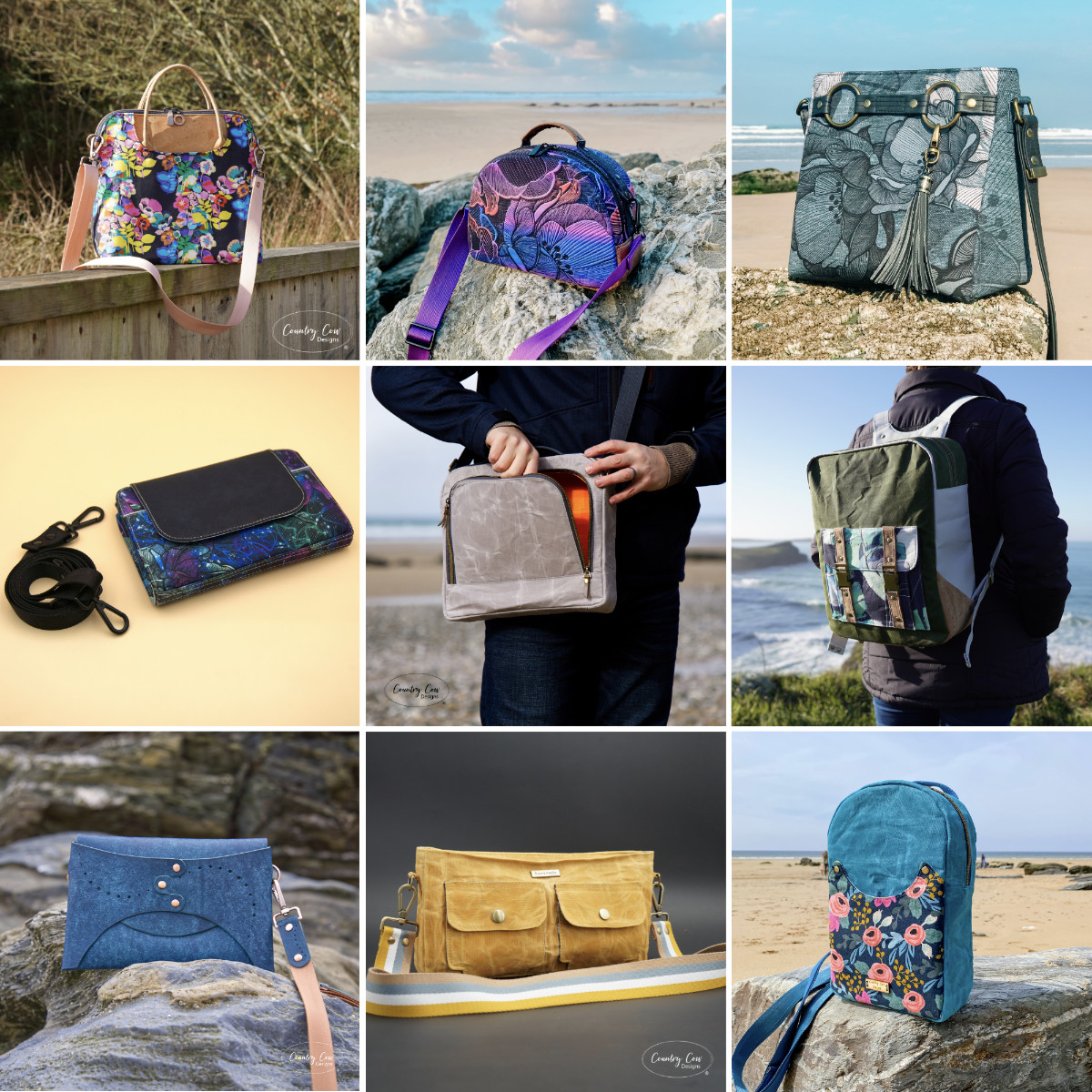
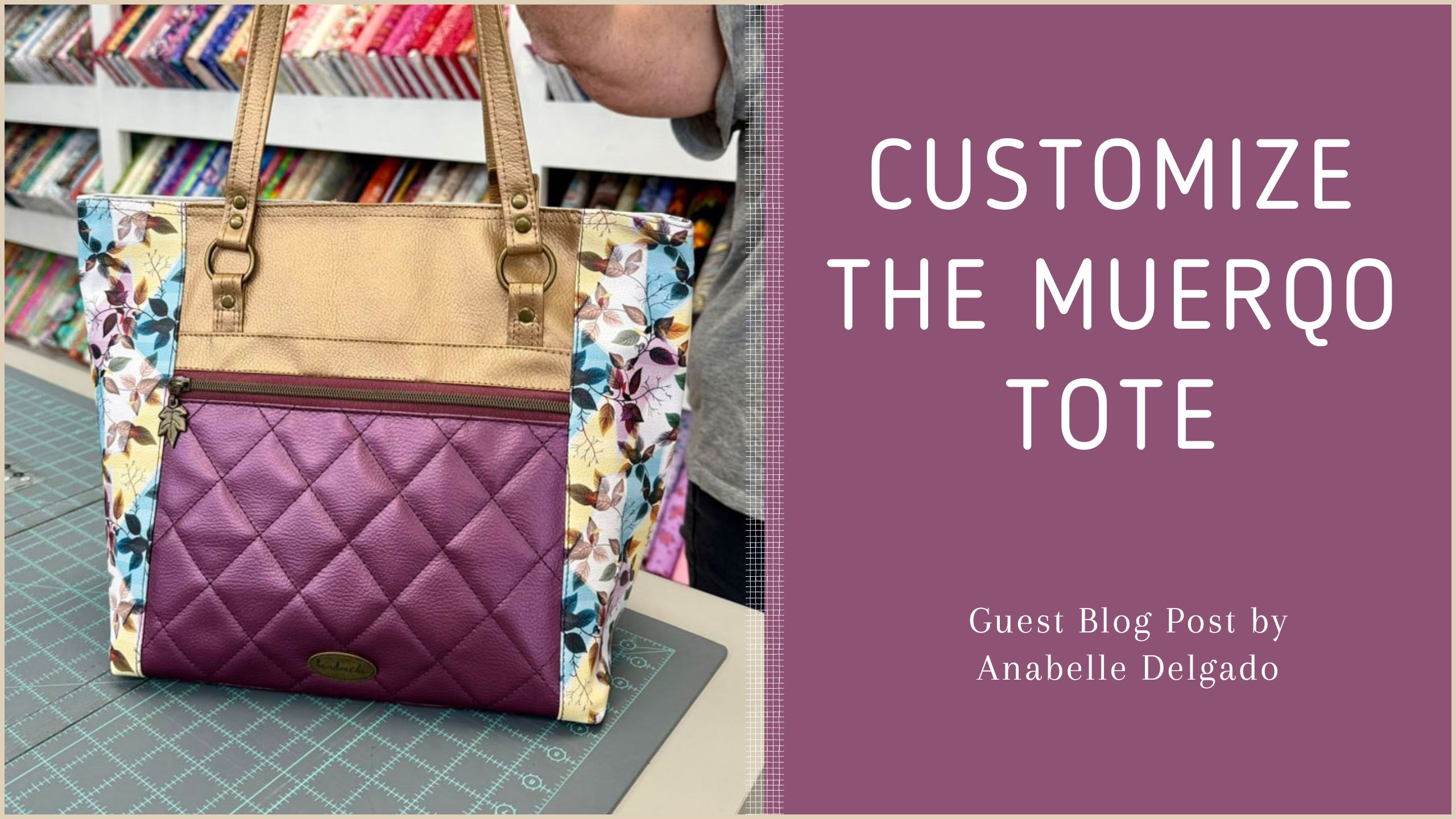
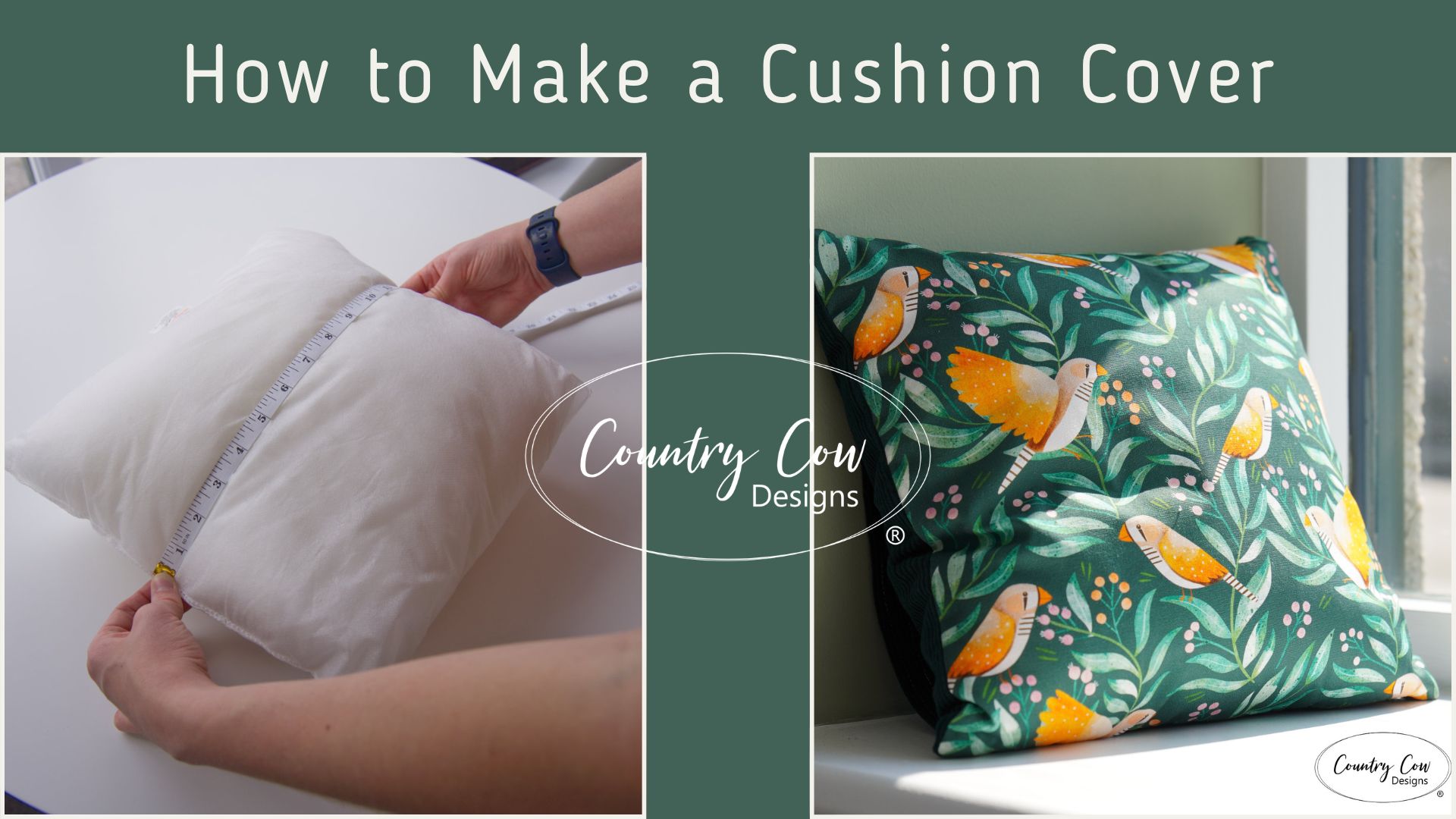
Excellent choice. I bought this after having big a juki1181n due to the fact it’s portable. You love my machine
I’ve recently been in the same buying journey and also settled on the HD9 to work by the side of my Brother NVQ1800, so far I love it, once I get tensions sorted. Look forward to reading of your experience.
Love
Amanda
What a great article! So helpful for those looking to change machines. Fortunately, I went through that process a few months ago and also picked the HD9. For me, I started on a Janome, and have now had 3 (including HD9). I really like the way they work. I also have a vintage 201k that I drag out sometimes to help with heavy seams – but since I got the HD9, the 201k has sat in the corner. It will be my backup – it’s 60 years old so I don’t think it will mind 😉.
Very helpful article. Thank you. Been toying with buying an industrial machine. Have a Janome Atelier 6 which mostly copes ok with bag making I’ve attempted thus far, but I think a heavy duty machine would be ideal. Going to look at the HD9
I have had all sorts of machines, high end expensive and bog standard, I do all sorts of sewing – garment, bags and occasionally quilting. Since I have had my singer 201 I haven’t used anything else, in fact I sold my fancy Janome because it couldn’t cope with the changes in fabric weight. I can sew anything on my 201 and it doesn’t ever complain, I took your advice and changed my needle lots. I do also have a fancy overlocker -babylock evolution so that does my jersey stitching. Sadie and Evie help me do the sewing I need to do. Enjoy your new machine, Jo and I look forward to seeing all the new bags you will create!
Like you I looked around and tried to do my homework, before buying a machine for my bag making. I do have a vintage singer 201 that is 80 years old, and she does sew like a dream, but I felt I still needed just that extra strength for the really thicker seams. I opted for the HD9 and just love it, she has handled everything I have thrown at her.
This article is awesome! Thank you for sharing your research on sewing machines for bagmaking. I was excited to hear about your new machine. I have the HD9 too and love love love it. I didn’t think I would like it so much since it only sews a straight stitch, but man, what a workhorse! I bought mine used at a local dealer (USA), so that’s another option to save some money on a more high-end machine. The Fabricator is my current dream machine (thanks to Adam’s video)!
Really informative. I am nof looking for a machine as I have had a Singer 201 for a few years now. Brilliant machine. I have another for domestic sewing . Your blog will be helpful to many people
Thanks for sharing all the research you did in selecting your machine. I look forward to seeing it in use in future videos. RIP Grandma’s Bernina.
Thanks for sharing Jo. Your machine has been on my wish list for over a year! I couldn’t afford it straight away and have been using singer 4423 heavy duty for bags. I sold my Pffaf ambition as I didn’t use all the fancy extras and banked the cash for a Janome. Sewing has taken a back seat temporarily due to chemo but I hope one day to be back full swing and getting this dream machine.
I hope your chemo goes as smoothly as it can. And that you get back to sewing sometime soon! It’s impossibly hard when your health stops you from doing things you love.
Great wee write up, thanks Jo.
I have the Janome Atelier 7 and its pretty good. I love the Acufeed flex feet,they are perfect forsewing through thicker layers of fabric…Diane at Spencer Ogg uses the same one. Ive had a go at usingbthe HD9, it was soooo powerful and fast!! I will get one some day lol…but until then, i will carry on with its wee cousin 😉. Take care.